Don Morley. Famous sports photographer, and very accomplished trials rider in his time. The author of. "Classic British Trials Bikes". With forward by Ralph Venables. Just one of his line of motorcycle publications. 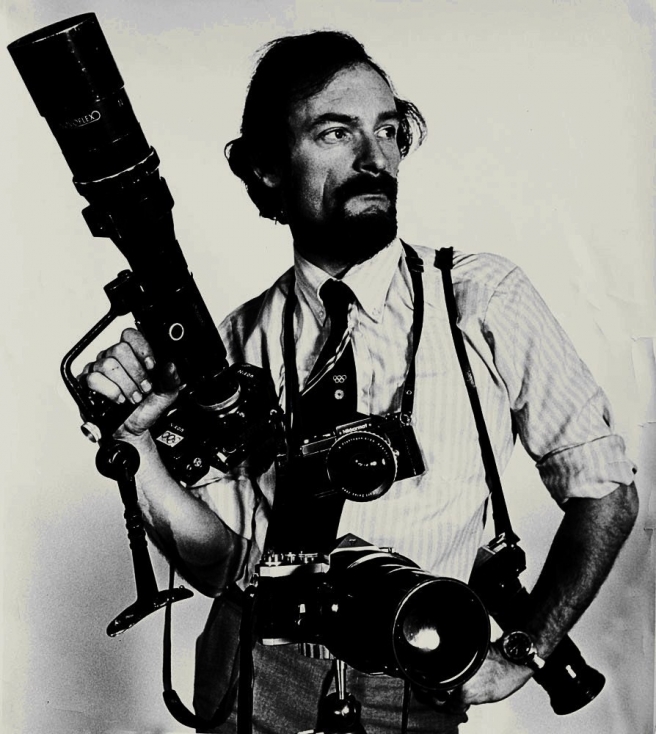 Don's version of how the "Otter" name came to be used by Harry Foster.... The Otter name and how it came about. This happened after Cornish rider Colin Dommett bought the bike BOK 228C off Scott Ellis, and decided to restore it, whence he and his friend Ally Clift (Top Cornish Centre Scrambler etc) decided to copy the frame whilst the bike was in pieces, and build a replica rather than continue wearing out the original. This in turn led them into being besieged by other BSA riders wanting copies, and decided them to go into small scale production for both Unit BSA engines, and Unit Triumph, and it was called "Otter" as it was actually made in the area made famous by the book of Tarka the Otter! (Exmoor-North Devon). And I might add, I had one of the first frame kits. That all said, I never liked mine much, despite its all alloy B40WD engine with turned down Victor round barrel massive weight saving, and I always wished I had stuck with a late 250 C15 engine, or used a Unit twin Triumph engine instead, can't put my finger on it exactly, but that no matter what I did to it, the B40 lump just wasn't right. Charlie:> Don's Foster Otter kit was number 5 that was made and he later bought another Foster Otter frame to fit a Triumph twin engine into... 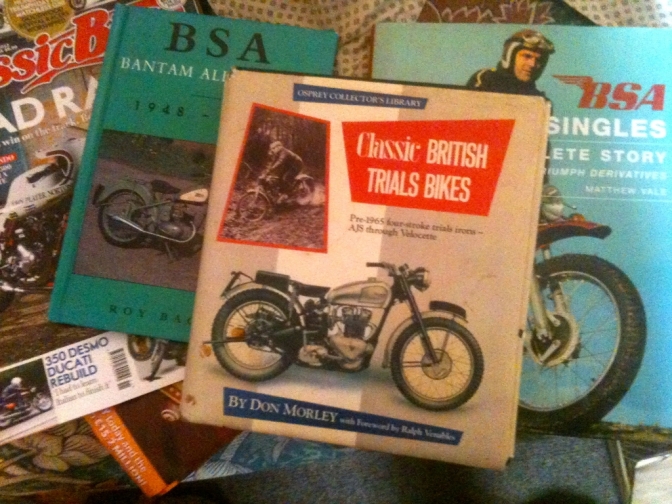 Don talking about Scott's frame. When I did my book "Classic British Four Stroke Trials Bikes" I interviewed Scott, and BSA Comp Chief Brian Martin, and they all confirmed It was entirely Scott and his fathers brainwave, indeed Brian let it be known he did not approve of this massive departure from standard at all, but as it was so close to the closing of BSA's Competition shop, he decided to sort of turn a blind eye, as by then such as Scott were Work's supported rather than as had been in the Golden era, fully works paid riders. Hope this helps, Best wishes, Don. This is what Don Morley had to say about the BSA "Otter" B40 in the Classic Bike magazine, dated January 1983. Writing about "Trials Heavyweights". And this was one of the first Harry Foster "Otter" Frames that Don had bought and fitted a B40 engine into. The "Otter" framed BSA B40. This is the real villain of the peace, a modern replica oil-in-frame job that knocks pounds off the weight of the old C15T frame and gives increased ground clearance. It was copied directly from Scott Ellis's last works BSA, BOK228C, (the one Scott built,) using an identical steering head angle and wheelbase, but the improved ground clearance, overcame what was always BSA's major problem with trials bikes . As Ellis, and the works, could have had these machines available in the 1960s, why not ride them now? Indeed the bike was much more competitive in the 250 form where the engine was a plonker, than is a B40, which is why the factory did not persevere with the 350 version. The "Otter" 350cc machine has the perfect 52 1/2in wheelbase, and a 9in ground clearance with the bike laden. On my bike, BSA Bantam hubs, and alloy tank reduced the weight to, 218 1/4 lb. Although other "Otter's" may differ slightly according to the equipment fitted to them. The 218lb figure is almost 27lb less than Sammy Miller achieved with his Ariel, GOV 132, while standard-framed 250 BSA's weighed almost as much as a 500 BSA, and was therefore at a distinct disadvantage on most every count. What really helps the Foster "Otter", however, is its rear-set footrests, and the slim rear sub-frame. Yet such mods are not beyond the Ariel and AJS riders. Don Morley 1983... 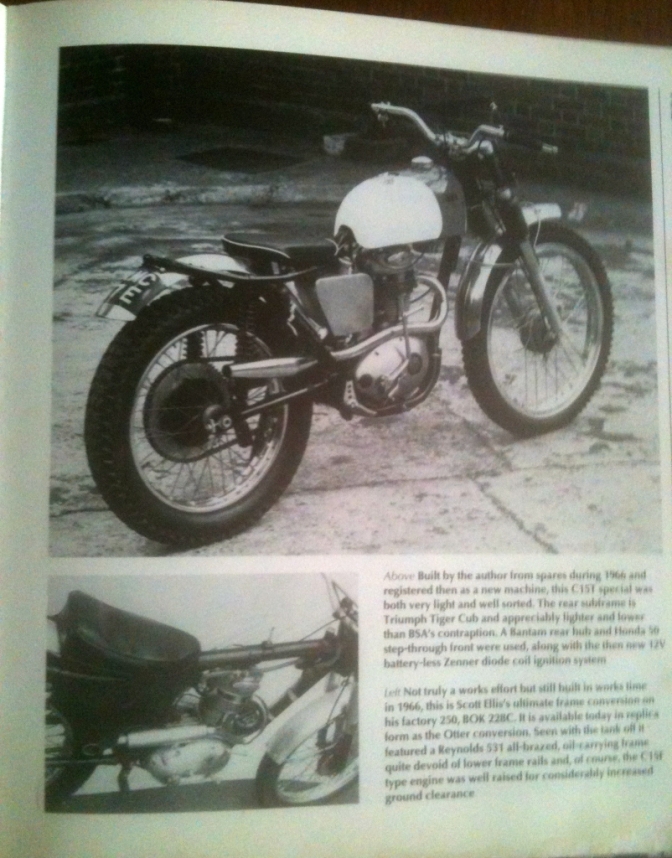 |
This is the page from Don's book "Classic British Trials Bikes",
That inspired me to go ahead and build my version of the Scott Ellis bike, that later was copied by Harry Foster and Ally Clift, and named the "BSA Otter".
Don's own BSA C15 built in 1966 the bike at the top of this page, used a Triumph Cub subframe the same.
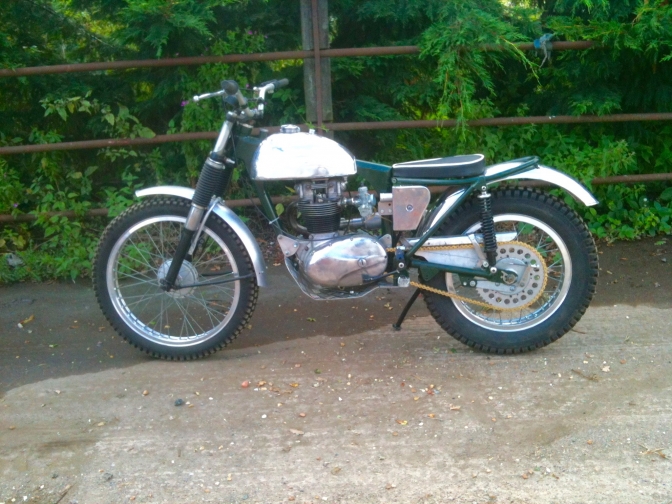
My Scott Ellis Replica BSA C15...2019...
And note: the use of the Honda 50-90 Cub "Step through" front hub used, the use of this hub started a trend at that time, and most other lightweight "specials" built, used one of these items.
And don't forget they were Pre 1965 in there existence, so should be classed for use on any machine purposed to be in this class Today.
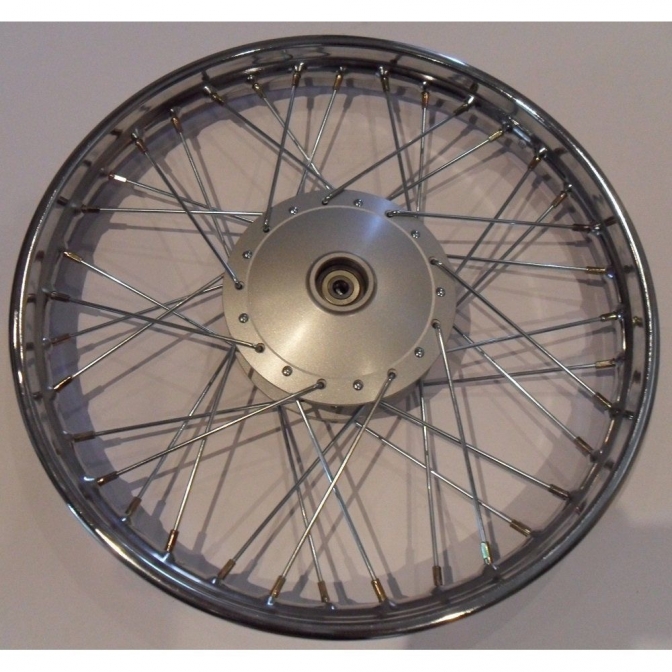
Honda Cub front wheel...
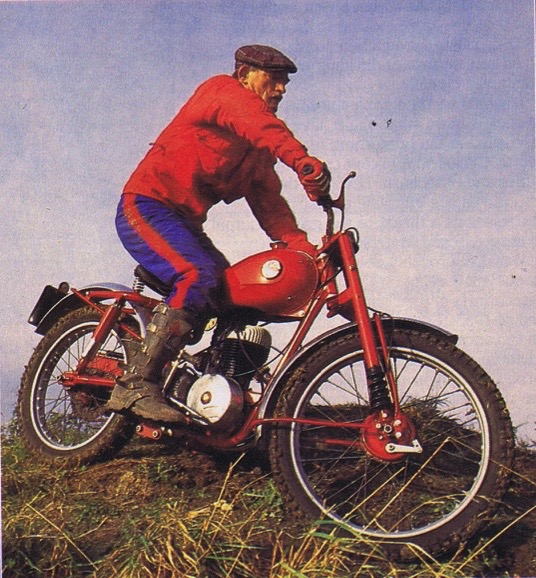
Photo from Classic Bike March 1988.
Title Arise Sir James. Photo Courtesy Martyn Barnwell.
Here Don was testing a nicely rebuilt 1955 James the first Swinging arm Captain trials bikes from the Greet Factory.
Don said that It was a shame it had the non damped forks which Bill Lomas had fitted as early as 1950, on his works built bike, the hydraulic damped forks were not fitted until 1955 on the production K7t trials although they were fitted to the K7C scrambler slightly earlier.
| Forks | Telescopic fork with oil-damped two-rate springs. The fork "H section was strengthened also (but not much !) |
| Fork oil capacity | 165cc per leg. SAE 50 |
***
The illustrated bike also had the usual modification of swapping the James forks for a pair of BSA units from a C11, C10L - these days a C15, I suppose. We used to do that because the fork top outer tubes used to corrode just below the lower yoke, and then the whole lot would snap when you used the brake........
Deryk Wylde...
Hi Mark.
This looks like one of those "Hens-Teeth" situations.
As I said the K7C was in fact the Cotswold scrambler and not the trials bike which was K7T, and although Bill Lomas fitted Hydraulic damped forks onto his works bike from 1950, the production James trials never had damped forks until 1955.
Most people fitted BSA forks to their James trials bikes, and I remember Bob Cooper doing just that, on his works James at one point.
The James trials forks were reinforced with an "H" section between the yokes to stop them twisting, but I don't think it helped that much.
I tried fitting"Teledraulic" forks to my James at the time, but made the big mistake of trying to use the yokes as well, no good at all, the offset was too much. The Billet boys of today would have solved the problem.
So you see where this type of modification started.
I will update my site on the Don Morley page with any other information I come up with.
Regards ~Oo>Charlie...
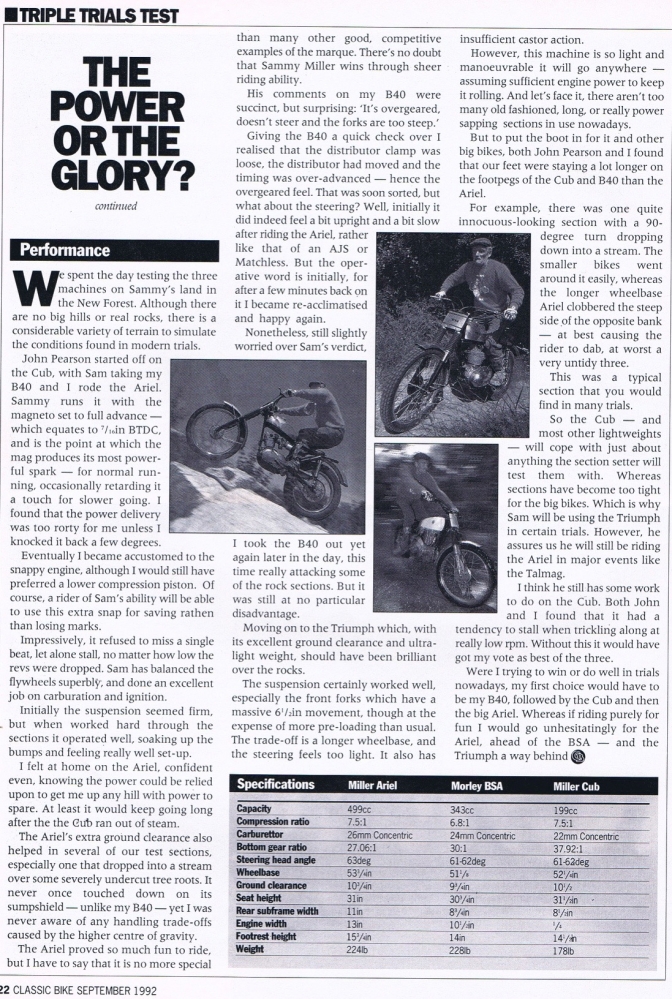
Article from Classic Bike September 1992.
Now I don't know what way around this was but Don had one of the first Harry Foster "Otter" frames, and fitted a B40 engine into that frame, whether Don sold the "Otter", and then later modified the BSA frame in this article is not clear.
Now knowing that Don sold the complete Foster "Otter", to Stan Robinson and then later built this machine, which could have been the case....

Photo The Classic MotorCycle.magazine...1988...
This is Stan Robinson aboard the Foster Otter that was said to be the old Don Morley machine.
_______
After checking again as you do, in the Classic British Trials Bikes book of Don's reading the BSA pages again more seems to become clear... The bike in the Power and the Glory article above could be Don's old BSA C15T framed B40 engined bike from 1961...

_______

Photos from Classic British Trials Bikes.
There is another PAGE on the site with a test on the later BSA Otter Don owned for a while.
_______
Don was a avid builder of bikes anyway, and the number that have
passed through his hand over the years can only probably be bettered by another journalist, and that is Deryk Wylde.
Here is a picture of Don riding one of the Many Greeves (Mostly Anglian's I think) that has passed through his hands.
And I believe he still owns one, or even two, today.
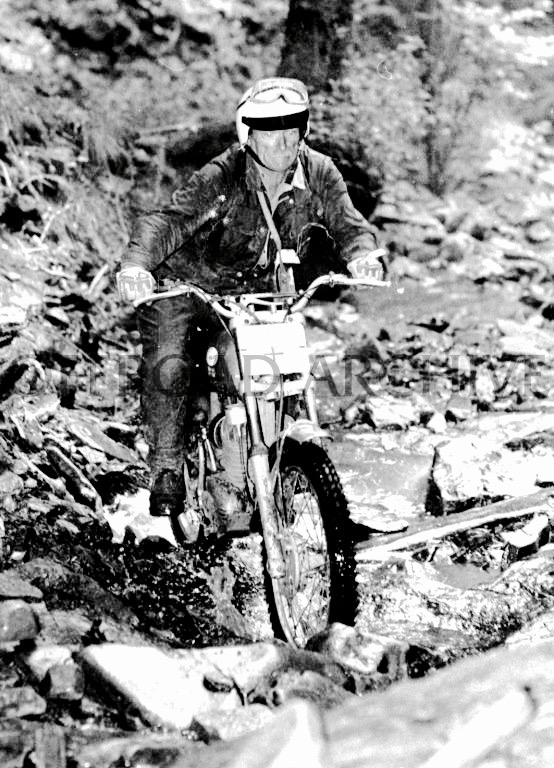 Photo Courtesy Deryk Wylde "Offroad Archive".
Photo Courtesy Deryk Wylde "Offroad Archive".
More later. About Don Morley...
And another story from Don Morley on the "Like Finding Hens teeth" page
Updat2024...11...





